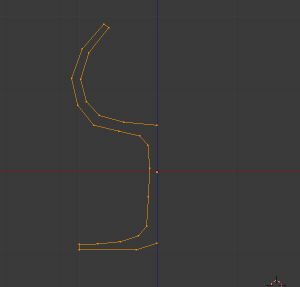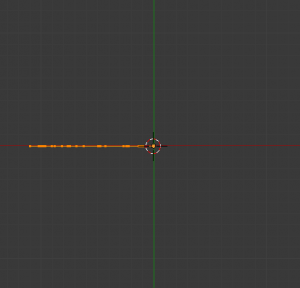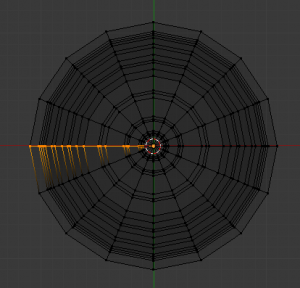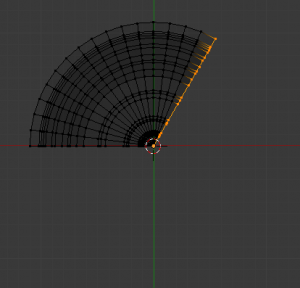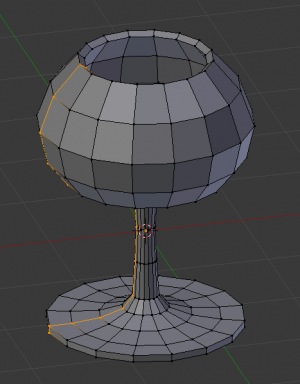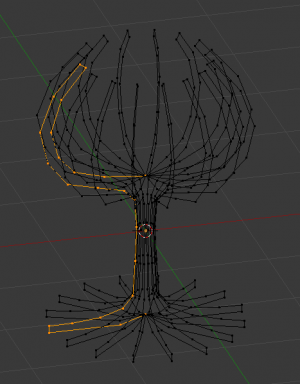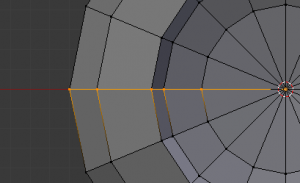Doc:2.6/Manual/Modeling/Meshes/Editing/Duplicating/Spin
Page status (reviewing guidelines)
Text
reorganize, elaborate
|
Spin
Mode: Edit mode
Panel: Mesh Tools (Editing context)
Use the Spin tool to create the sort of objects that you would produce on a lathe (this tool is often called a “lathe”-tool or a “sweep”-tool in the literature, for this reason). In fact, it does a sort of circular extrusion of your selected elements, centered on the 3D cursor, and around the axis perpendicular to the working view…
- The point of view will determine around which axis the extrusion spins…
- The position of the 3D cursor will be the center of the rotation.
Here are its settings:
- Steps
- Specifies how many copies will be extruded along the “sweep”.
- Dupli
- When enabled, will keep the original selected elements as separated islands in the mesh (i.e. unlinked to the result of the spin extrusion).
- Angle
- specifies the angle “swept” by this tool, in degrees (e.g. set it to 180 ° for half a turn).
- Center
- Specifies the center of the spin. By default it uses the cursor position.
- Axis
- Specify the spin axis as a vector. By default it uses the view axis.
Example
First, create a mesh representing the profile of your object. If you are modeling a hollow object, it is a good idea to thicken the outline. (Glass profile) shows the profile for a wine glass we will model as a demonstration.
Go to the Edit mode and select all the vertices of the Profile with A.
We will be rotating the object around the cursor in the top view, so switch to the top view with 7 NumPad.
Place the cursor along the center of the profile by selecting one of the vertices along the center, and snapping the 3D cursor to that location with ⇧ ShiftS » Cursor -> Selection. (Glass profile, top view in Edit mode, just before spinning) shows the wine glass profile from top view, with the cursor correctly positioned.
Click the Spin button. If you have more than one 3D view open, the cursor will change to an arrow with a question mark and you will have to click in the window containing the top view before continuing. If you have only one 3D view open, the spin will happen immediately. (Spun profile) shows the result of a successful spin.
Angle
Dupli
Merge Duplicates
The spin operation leaves duplicate vertices along the profile. You can select all vertices at the seam with Box select (B) shown in (Seam vertex selection) and perform a Remove Doubles operation.
Notice the selected vertex count before and after the Remove Doubles operation (Vertex count after removing doubles). If all goes well, the final vertex count (38 in this example) should match the number of the original profile noted in (Mesh data – Vertex and face numbers). If not, some vertices were missed and you will need to weld them manually. Or, worse, too many vertices will have been merged.
Recalculate Normals
All that remains now is to recalculate the normals to the outside by selecting all vertices, pressing CtrlN and validating Recalc Normals Outside in the pop-up menu.
